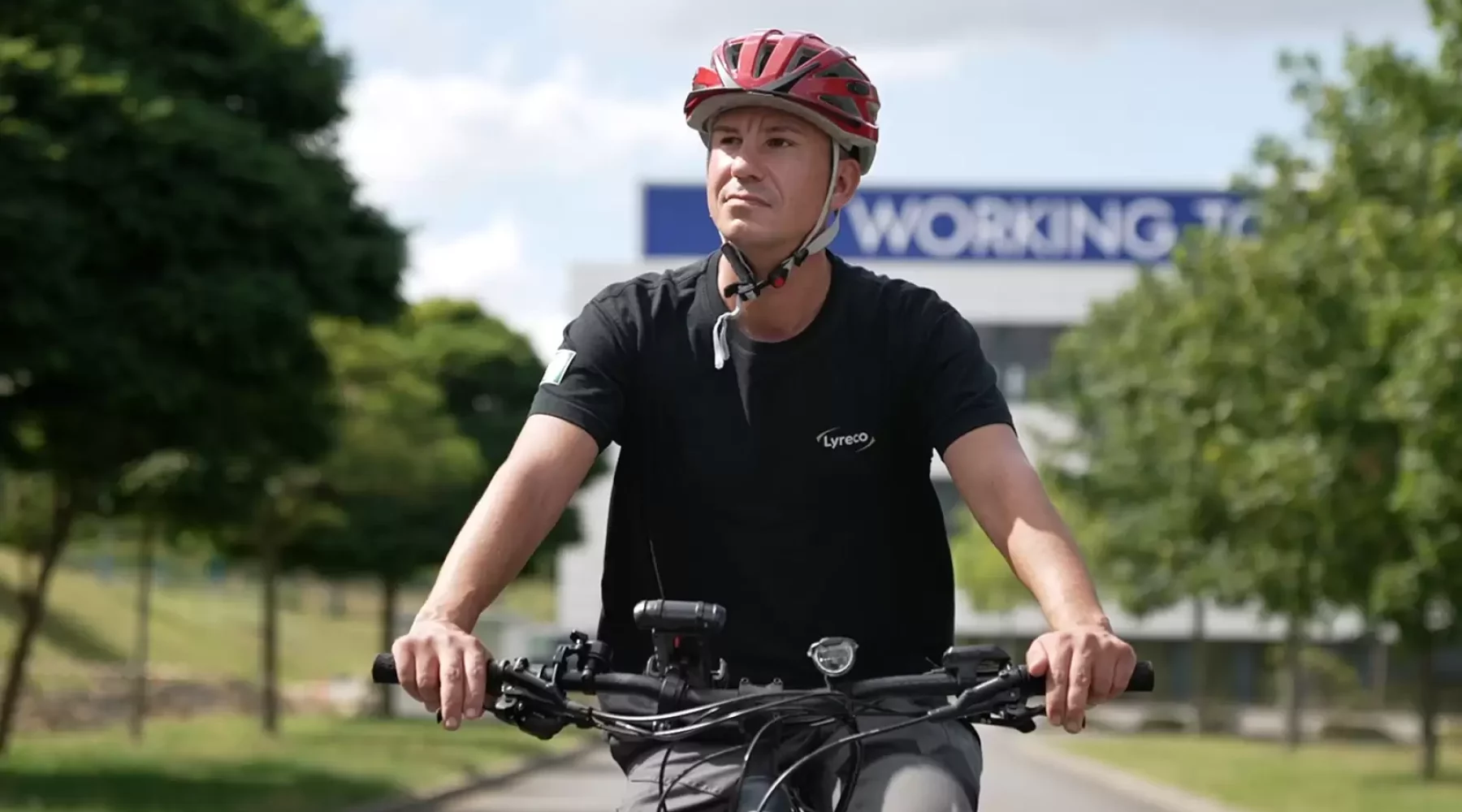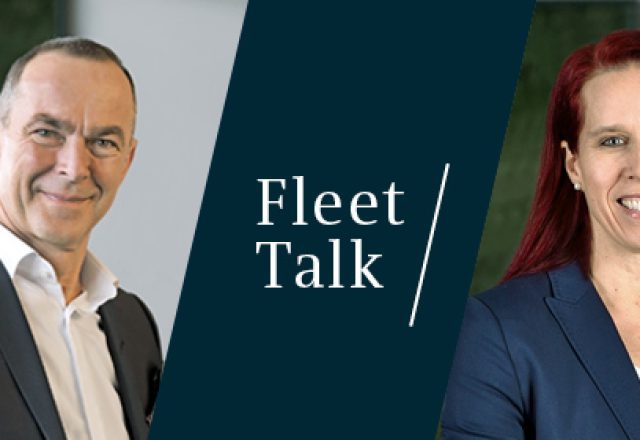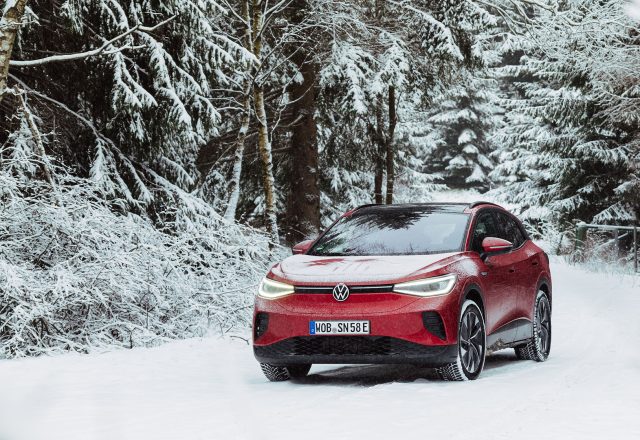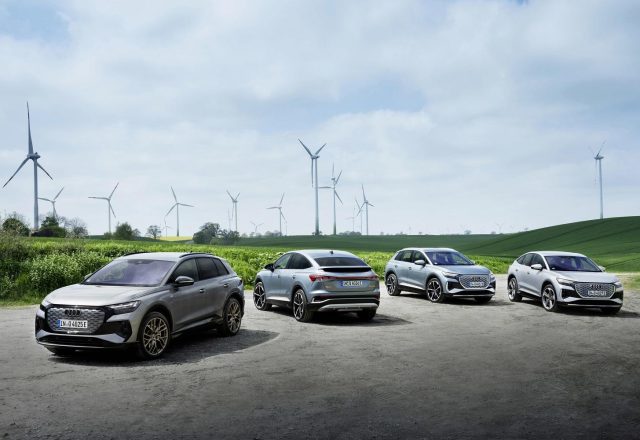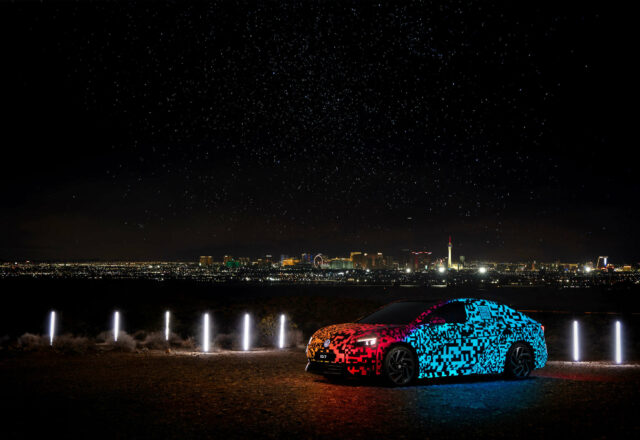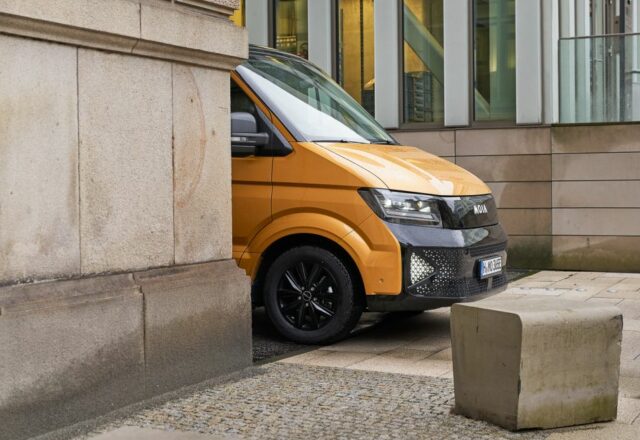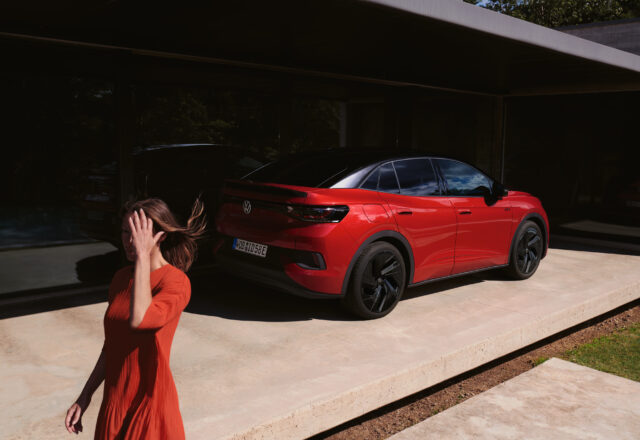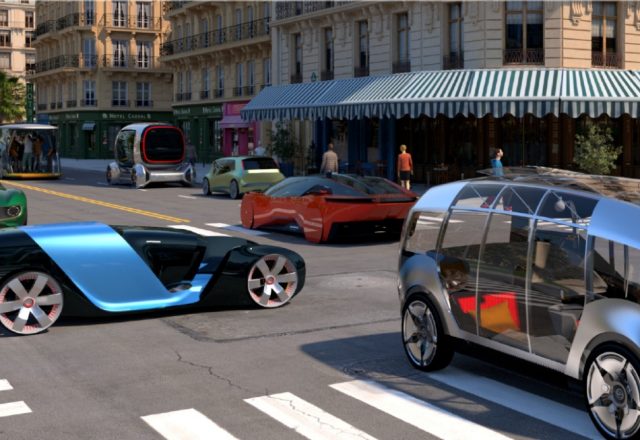Lyreco Deutschland GmbH specialises in office supplies, workplace solutions and occupational safety. Based in Barsinghausen near Hanover in Lower Saxony, the company has a workforce of some 750 employees, many of whom cycle to work each day. In line with mobility trends, Lyreco introduced bike leasing in recent months and is using the services of Volkswagen Leasing GmbH¹⁾ in cooperation with partner Lease a Bike²⁾. The modern add-on service is an attractive benefit that is becoming increasingly popular with employees. No surprise really that employees are especially attracted by the offer considering the comparatively low purchase cost of bikes of all types among other benefits. And employers are also noticing the positive effects.

In this interview, Ulrike Thoms, People & Culture Director at Lyreco and Benjamin Bressem from the Talent Acquisition Team at Lyreco (in picture on the right) as well as Marcel Schrader, Key Account Manager at Volkswagen Leasing GmbH (on the left), talk about the many advantages that bike leasing offers everyone involved.
Ms Thoms, Mr Bressem, why did you decide to introduce a bike leasing scheme for your employees?
Ulrike Thoms: Good question. The topic of bike leasing was being raised again and again by our employees. At the same time, our integrated mobility provider VW FS brought the topic to our attention. There was simply something in the air. Aside from that, we are always on the lookout for modern benefits for our employees. Bike leasing is ideal in this respect since it combines several positive factors at the same time and is in line with our values and strategic objectives in relation to sustainability. Mobility is a key aspect of this today. Added to this are the positive effects on health and the more attractive purchase costs.
What is most important to your employees in this regard – protecting the environment, promoting their own health or saving money?
Ulrike Thoms: Exercise-related aspects are definitely a primary consideration for many. We have a number of employees who are extremely sporty and plan their bike assembly meticulously. They are genuine professionals when it comes to bikes and are even willing at times to push the limits in terms of price. In this respect, I believe that health, exercise and sports activity play a vital role. But the practical considerations are also important: Our main site is located in Barsinghausen near Bad Nenndorf and many of our employees live in the immediate vicinity, with some of them cycling to work.
How many company bikes are already being used at Lyreco?
Benjamin Bressem: We have been offering the bike leasing scheme to our employees since September last year. We were all very excited when it was introduced to see what the take-up would be like. Since then, some 60 employees have availed of the service and a total of about 80 bicycles have been leased. Some employees have even struck twice.
“The topic of cycling is well received by our employees and is definitely increasing motivation.”
Ulrike Thoms
People & Culture Director, Lyreco
Which bicycle type is the most popular? Electric bikes or conventional bicycles?
Ulrike Thoms: Speaking from my own experience, I believe that the majority of users are interested primarily in electric bikes and sports bikes. But your traditional bicycle or children’s bikes are also very popular.
Do you get the impression that your employees are more motivated to come to work when they travel by bike?
Ulrike Thoms: That’s difficult to quantify right now, but what is clear is that the topic is popular and is definitely increasing motivation. Anyone using the service will certainly be pleased with their new bike for a long time and therefore enjoy their commute to work.
How does the offer affect new applicants?
Benjamin Bressem: We have naturally included the benefit in our job advertisements and applicants regularly make inquiries about this, for example about the provider. But there are already lots of companies offering their employees a bike leasing scheme – in other words, it’s no longer a decisive unique selling point on the job market. But we believe that it sends out a positive and modern signal to all applicants. We already have someone who has brought their bike leasing contract from their previous employer to us.
Marcel Schrader: I have to agree. In my experience, bike leasing is now an integral element of employer branding. Most of our major clients are very interested in the service.
“The fundamental process works smoothly and is very easy to use for us as a company.”
Benjamin Bressem
Talent Acquisition Team, Lyreco
How does it work?
Benjamin Bressem: The fundamental process works smoothly and is very easy to use for us as a company. We had a joint video call with Lease a Bike when introducing the scheme, which all employees were invited to join and have their questions answered. They guided us expertly and offered detailed advice on all aspects.
Marcel Schrader: Incidentally, our cooperation agreement also includes the option of returning bikes after no later than six months without obligation. This comes in handy in the event of a change of employer. In addition, processing is very straightforward and can be handled completely digitally without the need for paper. And in terms of the insurance included: A bicycle must be locked but not attached for insurance to cover theft or damage.
Does the new offer involve a lot of additional administrative overhead for you?
Benjamin Bressem: In the beginning we had a surprising amount of work owing to the high level of interest. But that’s positive in itself – we were always really pleased when we received a new inquiry. Our internal chat group wasn’t silent for even a minute in the early days.
Ulrike Thoms: A small team of three or four people took care of the process. And they did have more to do in the early days. But once the processes were up and running, everything worked quickly and smoothly. The software for managing the processes is very intuitive and clear for that matter.
Would you recommend bike leasing to other companies?
Ulrike Thoms: Absolutely! It’s a sensible benefit in keeping with the times, which promotes the health and motivation of employees. E-bikes are often very expensive to buy. As a company we maintain a large warehouse and our employees include professional groups that tend to have more modest earnings. We therefore help these people to afford a good bicycle – even for family members. These are all good reasons for employers to offer bike leasing.
Can bike leasing also enhance the employer’s image?
Ulrike Thoms: Without doubt, but it must be said that we are, of course, far from being the only company to offer its employees this service. The topic has already become a basic expectation of many applicants. And it may not be long before bike leasing becomes as normal as the possibility of working from home is today.
Benjamin Bressem: Exactly, I can imagine that at some point it will even reflect negatively on employers if they do not offer their employees bike leasing. That’s because applicants know perfectly well that it would be so easy to introduce the benefit.
Do you both have a company bicycle?
Ulrike Thoms: Yes, I even have two.
Benjamin Bressem: And I am planning to lease an e-bike since my wife and I have moved to the mountainside and it’s pretty exhausting getting there.
This article was first published at www.vwfs.de/geschaeftskunden
All information applies to the German market.
¹⁾The subsidiaries of Volkswagen Financial Services AG and its sister company, Volkswagen Bank GmbH, provide various services under the common name “Volkswagen Financial Services”. These services are banking services (provided by Volkswagen Bank GmbH), leasing services (provided by Volkswagen Leasing GmbH), insurance services (provided by Volkswagen Versicherung AG, Volkswagen Autoversicherung AG) and mobility services (provided by Volkswagen Leasing GmbH, among others). In addition, insurance products from other providers are brokered.
²⁾An offer from Lease a Bike, a brand of Bike Mobility Services GmbH, Mühlenstraße 28, 49661 Cloppenburg.
Status: 18.10.2023
© Volkswagen AG
